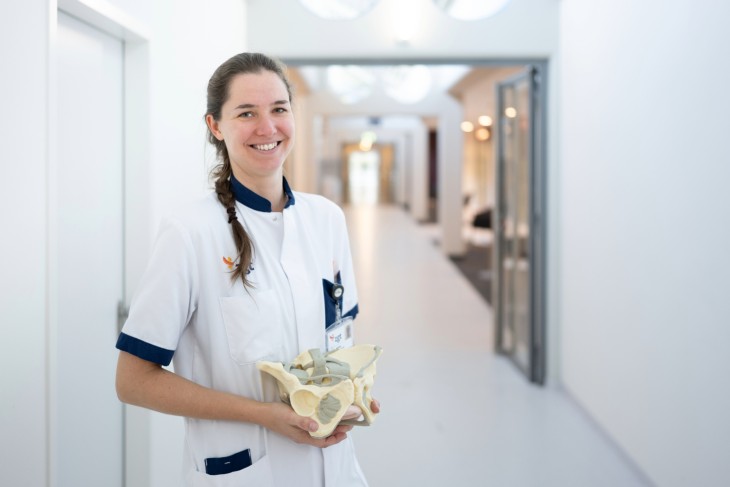Everyone has experienced poor signal strength at some point. This happens because your phone only connects to the cell towers of your provider—whether that’s KPN, Vodafone, or Odido. Other networks’ towers are only available in emergencies. While we use roaming abroad, which allows us to connect to different networks, we don’t do this within the Netherlands. Lotte Weedage has explored whether national roaming—meaning you can also connect to towers from other providers—could improve your mobile internet connection, no matter where you are.
New insights for better connections
Weedage ran simulations using data on population density and the location of cell towers across the Netherlands. She found that national roaming could improve mobile coverage by 13% in some parts of the country and increase the number of people with high-speed internet by as much as 55%. And this wouldn’t need to be applied everywhere. Simply opening up cell towers in more remote areas could already lead to significant improvements in coverage.
Why isn’t this happening yet?
There are some challenges to implementing national roaming. Providers need to keep track of exactly which customer is using which cell tower to ensure fair billing. Additionally, providers like to compete on the quality of their network coverage in various locations, and there are still considerable differences between them. However, Weedage’s research shows that collaboration between providers could make a big difference, without completely erasing competition.
Life-saving during disasters
Weedage’s research also demonstrates how national roaming could not only improve everyday network coverage but could also be life-saving during disasters such as earthquakes, cyberattacks, or power outages. In these situations, it’s crucial that mobile networks remain operational so people can call for help and rescue teams can communicate. National roaming would ensure that if one network fails, users automatically connect to another. This approach is already in use in countries like India and the US during emergencies and has proven to be an effective solution. Innovations like these can literally save lives.
Interactive map
Weedage has also developed an interactive map that shows how good mobile coverage is in different areas and how it would improve with national roaming. The map allows you to see which provider offers the best coverage in your province, municipality, or even your postal code area. The research shows significant differences in network performance between regions and providers. Rural areas, in particular Friesland and Zeeland, could benefit the most.
Want to know more?
Would you like to explore the interactive map? Visit Lotte Weedage's website to check it out. Lotte Weedage is a PhD candidate in the Discrete Mathematics and Mathematical Programming (DMMP) research group at the Faculty of EEMCS. She collaborated with top researchers Dr Clara Stegehuis and Dr Suzan Bayhan on this project.




